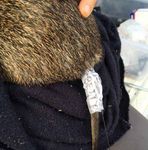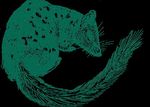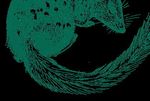Science for Saving Species - Research findings factsheet Project 3.2.2.1
←
→
Page content transcription
If your browser does not render page correctly, please read the page content below
Science for Saving Species
Research findings factsheet
Project 3.2.2.1
Using reintroductions and long-term monitoring to unravel
causes of decline and extinctions of threatened mammals
In brief
This project trialled the Translocated captive-bred predators Predation (by foxes and dogs) and
reintroduction of 28 southern brown are less skilled at hunting than wild- being hit by cars emerged as the
bandicoots (eastern subspecies) born predators. With this in mind, greatest threats to reintroduced
Isoodon obesulus obesulus and we provided supplementary feeding quolls. In response to these
60 eastern quolls Dasyurus viverrinus stations for reintroduced captive- findings, park management and
to Booderee National Park bred eastern quolls. Monitoring reintroduction strategies were
between 2016 and 2019. revealed that the quolls used these adjusted; this included translocating
feeding stations but in addition were animals to areas with less traffic,
Careful monitoring allowed adaptive
able to forage for food in the wild. and increasing already substantial
management of threats as they
Their diet was diverse, including monitoring and control for foxes
emerged and new ecological
mammals, reptiles, birds, frogs, and installing road signs to increase
insights that will benefit the planning
invertebrates and fish. awareness of quolls in the park.
of future reintroduction programs.
Southern brown bandicoots Booderee National Park rangers (Shane Sturgeon, Gavin McLeod, Tyson Simpson-Brown)
preferred heath and woodland processing an eastern quoll. Photo: Parks Australia
vegetation communities over the
more widespread forest community.
Future reintroductions of bandicoots
should release individuals into these
preferred habitats. Male bandicoots
have larger spatial requirements
than female bandicoots. Releases
of male bandicoots should allow for
adequate distance between other
males to minimise antagonistic
behaviour and overdispersal of
subordinate males.
The founder bandicoot population
has good genetic diversity. However,
if future supplementation is required,
individuals from the Melbourne
region would yield the greatest
increase in genetic diversity.
Maintaining good genetic diversity
is important for the long-time
viability of the population.Background
Reintroductions are increasingly genetically different individuals
being used as an effective way (outbreeding) both cause a decline
of re-establishing locally extinct in fitness. However, the latter is
or declining faunal populations. generally overstated. Reintroduction
However, the chances of successful programs benefit from using source
establishment of reintroduced populations with healthy genetic
species are often low due to diversity. Supplementing individuals
incomplete knowledge of the factors with high genetic diversity relative to
that influence successful outcomes the founder population can maintain
of survival and establishment. or augment the genetic diversity of
Well-designed and monitored the ongoing population. We went
reintroductions can provide insights through a process of planning, A radio transmitter attached to a southern brown
bandicoot tail. Photo: Natasha Robinson
into the original causes of species implementing and reviewing the
decline and local extinction, current reintroductions of southern brown
threats to their re-establishment, bandicoots (eastern subspecies) Main aims of research
and what the species need to Isoodon obesulus obesulus and
The research aimed to:
survive and persist in the eastern quolls Dasyurus viverrinus
contemporary environment. to Booderee National Park • trial the reintroduction of
between 2016 and 2019. southern brown bandicoots
Key to improving the success and eastern quolls to
of reintroductions are careful Both southern brown bandicoots
Booderee National Park
consideration of threats, identifying and eastern quolls are nationally
and reducing those threats, and threatened ground-dwelling small • monitor the survival, dispersal,
monitoring; and then making to medium-sized marsupials. diet, genetic diversity, breeding,
improvements to management from The two species were common body condition and habitat
what is learnt from these actions. in the area before their local preferences of the animals
extinction in the early 1900s. released
Genetic diversity is an important
consideration in reintroductions. Foxes pose a serious threat to both • test management strategies
Research shows that genetic species. Booderee National Park and make improvements to the
diversity is not well integrated has conducted intensive fox control reintroduction program (e.g.,
into reintroduction. Concerns for since 2003. The park is unfenced release methods, supplementary
adverse outcomes such as mating and co-managed with the local feeding, timing of release)
between closely related individuals Indigenous community, the • measure genetic diversity of
(inbreeding) or mating between Wreck Bay Aboriginal Community. the southern brown bandicoot
founder population, simulate
Shane Sturgeon releases a
change in genetic diversity
southern brown bandicoot
Photo: Thea OLoughlin from supplementation of this
population from other source
populations and provide
recommendations for suitable
source populations for future
genetic supplementation
of the population
• understand any risks that either
species might pose to other
species in the park, for example,
the possibility that eastern quolls
could threaten southern brown
bandicoots via predation.What we did
This project was a collaboration and forest. Post-release monitoring of all individuals of both species
between Parks Australia, the revealed that bandicoots preferred released to assess genetic diversity.
Australian National University, Wreck heath and woodland over forest. We monitored the movements of
Bay Aboriginal Community, Taronga translocated animals via GPS and
We sourced the eastern quolls from
Conservation Society, Forestry or VHF transmitters. We mounted
three captive-breeding sanctuaries:
Corporation of NSW, Rewilding VHF transmitters on the tails of
Devils@Cradle, Trowunna and
Australia and WWF Australia. southern brown bandicoots; and
Aussie Ark. Sixty captive-bred eastern
The southern brown bandicoots quolls were released over two years: monitored animals day and night for
were sourced from the nearest 20 individuals (10 male, 10 female) four weeks from the initial release
viable wild population, in New South in 2018 and 40 individuals (21 male, date. Quolls had GPS/VHF collars.
Wales, from state forest around 19 female) in 2019. Quolls were We tracked the quolls daily for four
Eden, around 250 km south of transported by air and land vehicle weeks then two to three times
Booderee National Park. to Booderee National Park. per week for up to three months
post-release. Both methods allowed
Over three years we caught and For both species of reintroduced us to monitor survival, movement
released 28 wild southern brown animal, the research team and habitat use of the animals.
bandicoots: 2016 (11 individuals), monitored survival, dispersal, habitat In addition, we used cameras to
2017 (12 individuals) and 2018 (5 preferences, body condition, detect individuals and visually check
individuals). The release locations breeding, genetic diversity and their health, and cage-trapping to
were approximately evenly diet. We investigated the diet of physically check health (e.g., for
distributed between three primary reintroduced eastern quolls by body weight and parasite load)
vegetation types assessed as collecting scats and analysing their and breeding status (checking
suitable habitat: heath, woodland contents. We also took ear biopsies for pouch young).
Shane Sturgeon and Dion Maple set up an eastern quoll feeding station.
Photo: Natasha RobinsonKey findings
Our findings contribute new diversity relative to other populations provided at feeding stations and
knowledge about how to improve across their range. We used genetic scavenging from other sources.
translocation methods for these data from different potential The quolls used the supplementary
two nationally endangered small source populations to simulate feeding stations, indicating that this
mammals, and by extension to supplementation scenarios and the may be an important strategy to
other species. resulting genetic diversity within assist with their establishment in
the Booderee population. This the wild. Quolls also foraged freely
Reintroduced southern brown
modelling identified the Melbourne and we observed them hunting
bandicoots and eastern quolls
region population as the most small prey, for example, insects.
survived and successfully bred in
suitable future source of bandicoots;
the park. Offspring were captured Evolutionary theory was used to
supplementation of individuals from
before their natal dispersal. The investigate the survival, dispersal
this source population would yield
founding populations of the two and change in body condition
the greatest increase in genetic
species are still small. Ongoing of reintroduced eastern quolls.
diversity within the Booderee
monitoring and management will Theory was found to make useful
bandicoot population.
be required to help ensure these predictions. Smaller quolls were
species remain in the park over Translocated captive-bred
found to disperse further than larger
the long term. predators are less skilled at hunting
quolls, in support of the “social
than wild-born predators, and
We found that reintroduced subordinate” hypothesis. Female
therefore more prone to starvation
bandicoot males dispersed twice as quolls had marginally higher rates
post-release. Knowledge of the
far as females, but that the home of survival than males, and regained
diet and foraging behaviour of
ranges of the sexes were similar in body condition following release;
the translocated captive-bred
size. We also found that bandicoots this supports the senescence (or
eastern quolls was therefore an
preferred heath and woodland ageing) theory, which predicts that
important consideration in their
vegetation communities and avoided ongoing survival and body condition
reintroductions. We found that the
forest. Our monitoring revealed are influenced by evolutionary
diet of the translocated eastern
that eastern quolls rarely use the drivers (e.g., factors that maximise
quolls in Booderee National Park
same habitat as southern brown breeding potential). Evolutionary
includes a variety of prey: small
bandicoots. The different habitat theory was found to be useful for
mammals, birds, invertebrates, fish,
preferences of the species indicates predicting translocation outcomes.
reptiles and frogs. Eastern quolls
that the threat of eastern quolls More informed predictions can
also consumed larger mammals
predating on bandicoots is minimal. improve the design of future
(e.g., macropods); however,
Predation by the introduced red fox this was likely quolls consuming releases and improve the likelihood
was a known threat to translocated macropod carcasses that were of successful outcomes.
eastern quolls. Parks Australia
implement intensive fox control. Chris MacGregor and volunteers catch southern brown bandicoots.
Photo: Natasha Robinson
However, even low densities of
foxes (and dogs) can be problematic.
Monitoring revealed predation and
vehicle collisions to be a major
threat to translocated quolls.
Targeted monitoring allowed us to
quickly identify these threats and to
revise and adapt mitigation strategies
for them. Founder quolls have bred
each year since their release.
The southern brown bandicoot
founder population at Booderee
National Park had good geneticTyson Simpson-Brown and Phillip Brown tracking
eastern quolls. Photo: Natasha Robinson
Implications
Good planning, monitoring, evaluating habitat suitability for future minimising quoll–vehicle interactions
communication, engagement translocations and management. will be integral to supporting the
and responsive management are species’ persistence in the park.
The findings about the habitat
essential for reintroduction success. preferences of the southern As our findings support evolutionary
Our team conducted a thorough brown bandicoots point to a theory, it leads us to recommend
review of threats before releasing recommendation that future that theory be better integrated into
animals, found ways to lessen bandicoot reintroductions to translocation planning as it can help
those threats, and monitored the Booderee National Park take make more informed predictions,
outcomes. The team was also able place within areas of heath and and that translocation programs
to quickly respond to unforeseen woodland, and that future releases be adapted accordingly.
threats. Good communication and consider the potentially larger
Finally, genetic diversity is an
engagement with the community spatial requirements that male
important consideration in
and stakeholders ensured that the bandicoots have, including their
reintroductions. Our genetic
program was supported by the local need to be able to avoid each other.
research with the southern brown
community, and the knowledge
Future translocations and ongoing bandicoots at Booderee will enable
gained and shared will be applied
management of eastern quolls managers to make informed
to future translocations.
at Booderee will benefit from the decisions about how to maximise
Knowledge of the foraging and knowledge gained about the main the long-term persistence and
hunting behaviour of the eastern threats to their persistence. Ongoing genetic diversity of reintroduced
quolls will be important for introduced predator control and populations.Cited material
Robinson, N.M., Blanchard, W.,
MacGregor, C., Brewster, R., Dexter,
N., Lindenmayer, D.B. 2020. Finding
food in a novel environment: The
diet and foraging behaviour of a
reintroduced endangered meso-
predator to mainland Australia.
Plos ONE 15: 12, e0243937.
Robinson, N.M., Blanchard, W.,
MacGregor, C., Brewster, R., Dexter,
N., Lindenmayer, D.B. 2021. Using
theory to predict survival, dispersal
and post-release body condition
of a reintroduced threatened
mammal 11: 2, pp. 1002-1012.
Robinson, N.M., Dexter, N.,
Brewster, R., Maple, D., MacGregor, Eastern quoll in trap. Photo: Natasha Robinson
C., Rose, K., Hall, J., Lindenmayer, Gavin McLeod releases an eastern quoll. Photo: Parks Australia
D.B. 2020. Be nimble with threat
mitigation: Lessons learned
from the reintroduction of an
endangered species. Restoration
Ecology 28:1, pp. 29–38.
Robinson, N.M., MacGregor,
C.I., Hradsky, B.A., Dexter, N.,
Lindenmayer, D.B. 2018. Bandicoots
return to Booderee: Initial survival,
dispersal, home range and habitat
preferences of reintroduced
southern brown bandicoots
(eastern sub species: Isoodon
obesulus obesulus). Wildlife
Research 45, pp. 132–142.
Robinson, N.M., Rhoades, C.,
Pierson, J., Lindenmayer. D.B.,
Banks, S.C. 2021. Prioritising source
populations for supplementing
genetic diversity of reintroduced
southern brown bandicoots
Further Information
Isoodon obesulus obesulus.
Conservation Genetics. Natasha Robinson
natasha.robinson@anu.edu.au
Cite this publication as NESP Threatened Species Recovery Hub. 2021. Using reintroductions and long-term monitor-
ing to unravel causes of decline and extinctions of threatened mammals, Research findings factsheet.
This project is supported through funding from the Australian Government’s National Environmental Science Program.You can also read



























































